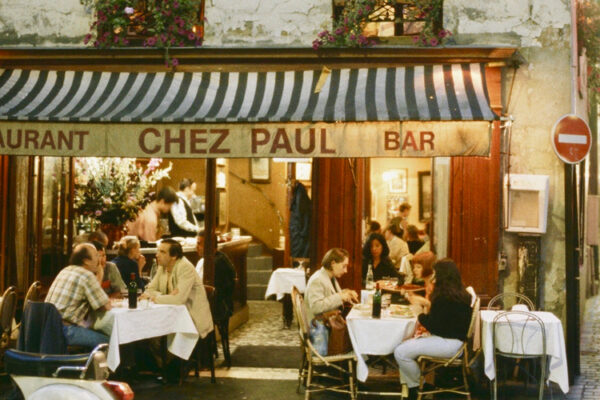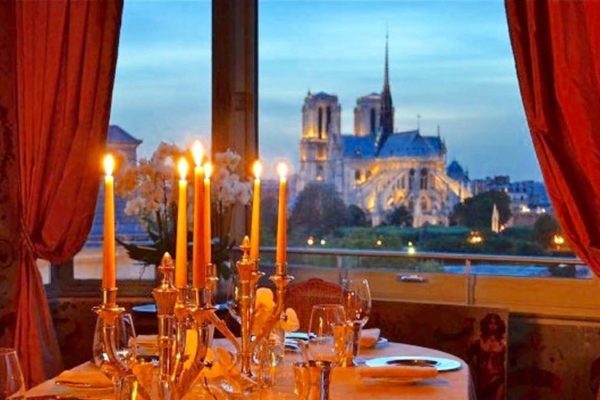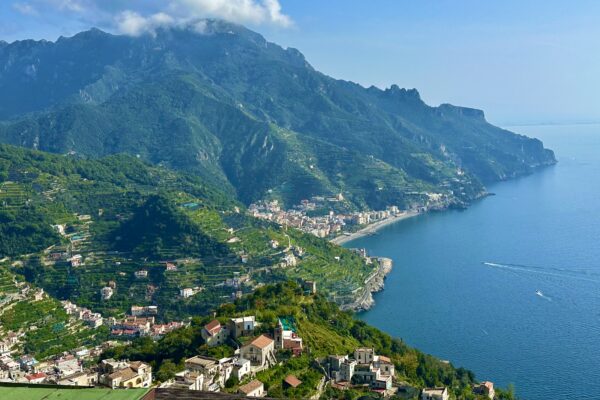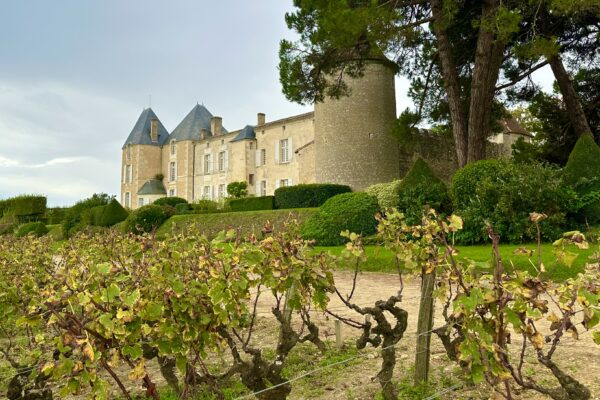The Other French Palace: Château de Fontainebleau
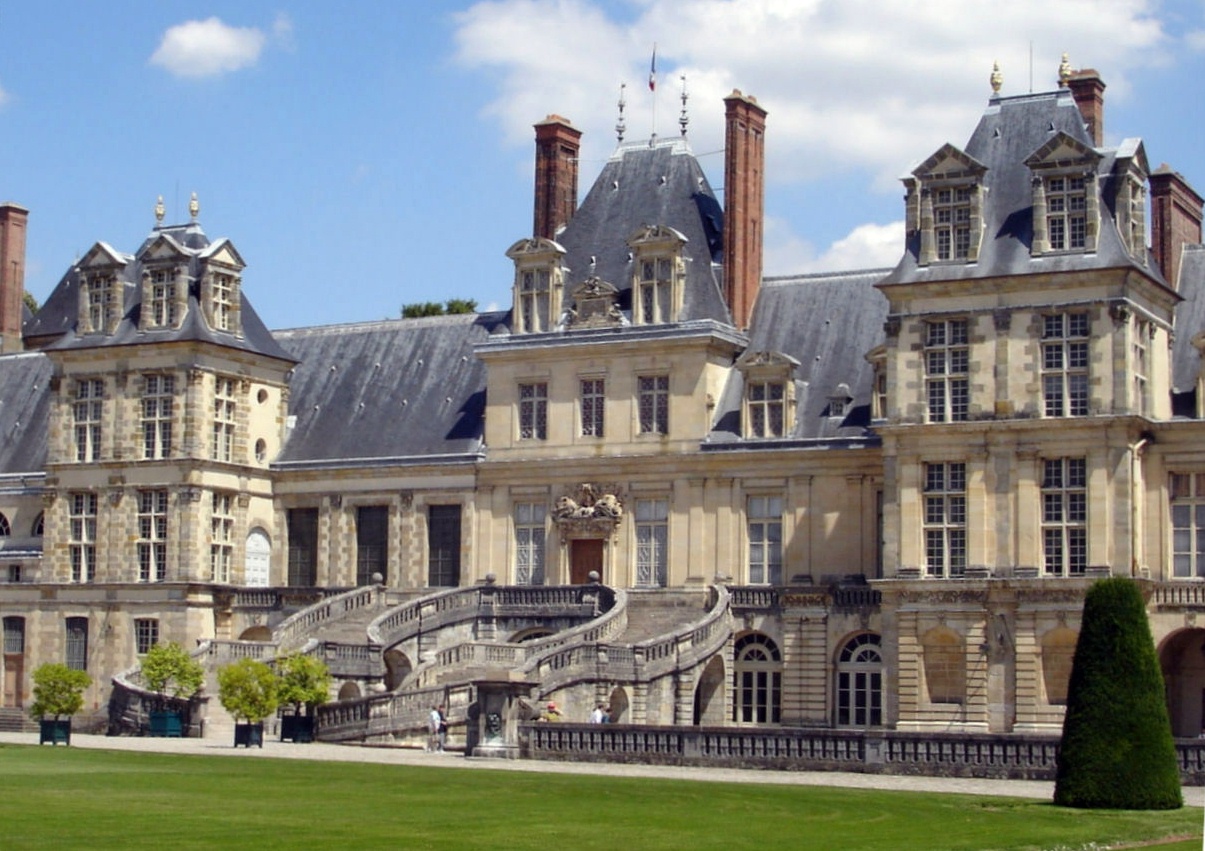
By Marla Norman, TCO Publisher
Driving through the charming village of Fontainebleau, we’re eager to catch a glimpse of the famous castle. It’s not long until we spot the colossal structure — 1,500 rooms covered by a roof that spans five acres, surrounded by 230 acres of lakes and gardens. Jaw-dropping doesn’t even begin to describe our initial reaction.
As we pull into the visitors parking, another astounding surprise awaits. Only a handful of other people are there! We assume we somehow confused the main entrance and reconfirm GPS coordinates. But we are, in fact, where we should be.
Still looking for the crowds, we rush to the ticket office and, to our shock, find….no one.
Just a few miles away, the Palace of Versailles, draws some 8 million visitors annually, making it one of Europe’s top tourist attractions. Meanwhile, Château de Fontainebleau, an equally spectacular palace, with arguably more historical significance, (not-to-mention 800 more rooms!) receives fewer than 300,000 visitors a year. We’re not sure how Fontainebleau has remained out of the travel spotlight. But avoiding thousands of selfie-taking, telephoto-lens-lugging, baby-buggy-bungling tourists is heavenly! (Don’t tell!)
IF ONLY THOSE WALLS COULD TALK
No other site in France has served as a royal residence longer than Château de Fontainebleau. Monarchs from Louis VII to Napoleon III all resided at various times in the palace, although François I and Napoleon spent more time and much more money on the estate than other rulers. To a lesser extent, Louis XVI can also take credit for a number of renovations, including a Turkish salon and boudoir for his wife, Queen Marie-Antoinette.

Grand Salon – with magnificent chandeliers, tapestries, Urbino majolica vases. Photos by Marla Norman.

Council Chamber – originally the office of François I, the room was later enlarged under Louis XIV. Paintings on the ceiling are by François Boucher, remembered as the father of Rococo.
In addition to the royal family, many of the King’s favorite ladies maintained petits châteaux or rooms at Fontainebleau. Case in point, both Queen Catherine de’ Medici and Diane de Poitiers, mistress to King Henry II, lived at Fontainebleau. Lady Diane is best remembered for her exquisite management of Château de Chenonceau — a property she also famously lost when Henry II died in a jousting match and Catherine de’ Medici sent her packing.
Diane at least made it out alive. In 1657, Queen Christina of Sweden arrived at Fontainebleau as a guest of Louis XIV. She was accompanied by her lover, the Marchese Gian Rinaldo Monaldeschi. During her stay she learned that her Italian paramour had passed on state secrets to her enemies. Servants chased the loose-lipped Marchese through the labyrinthine halls of the castle until they finally overtook the poor wretch and stabbed him to death. Non è una buona giornata.

Apartment of the Pope & Queen-Mother Anne of Austria, mid-17th century. Photo by Marla Norman
Napoleon adored Fontainebleau, calling it “A true residence of kings… and the most comfortable and happily situated palace in Europe.” In 1814, Le Petit General spent the last days of his reign at the estate. Deeply depressed, he tried to take his own life. Unsuccessful, however, he instead made a farewell speech to his troops and left for his first exile on the tiny island of Elba.

Napoleon’s Military hat, overcoat, pistols, valise and spurs. At 5’7″ Le Petit General was not a commanding presence, but he managed, at least for a time, to have the world at his feet. Photos by Marla Norman

Empress Josephine in Coronation Robes by François Gérard. Although Napoleon later divorced Josephine when she couldn’t bear children, there is no doubt she was his grand love. “My happiness is to be near you,” he wrote. “I live over in my memory your caresses.”
The historical status of the palace and, even more likely, the 1,500 rooms, also made Fontainebleau the favorite choice of occupying armies. In 1870, during the Franco-Prussian War, the palace was seized by the Prussians, who used the august estate as their army headquarters. Then, during World War II, the Château was taken over by the Germans. After the war, the estate housed NATO’s Supreme Headquarters.
Happily, in 1964-1968, President Charles De Gaulle began to restore the estate and in 1981, Château de Fontainebleau was classified as a UNESCO World Heritage Site.
A TRUE RESIDENCE OF KINGS
The original Fontainebleau castle dates from 1137, predating Versailles by some five centuries. Sir Thomas Becket consecrated the property in 1169.
In 1525-1547, Renaissance King François I invested heavily in the estate, converting the medieval fortress into a lavishly ornate palace. His suites and salons dating from the 16th century, feature frescoes with life-sized figures, coffered ceilings, carved wall panels and gold leaf detailing. The King’s iconic salamander emblems are everywhere along with the royal monogram “F.” The François I Gallery in particular is now recognized as Renaissance masterpiece and one of the finest examples of decorative art in Europe.

Fresco in the François I Gallery – Notice the King’s signature salamander at the top of the painting. Photos by Marla Norman.
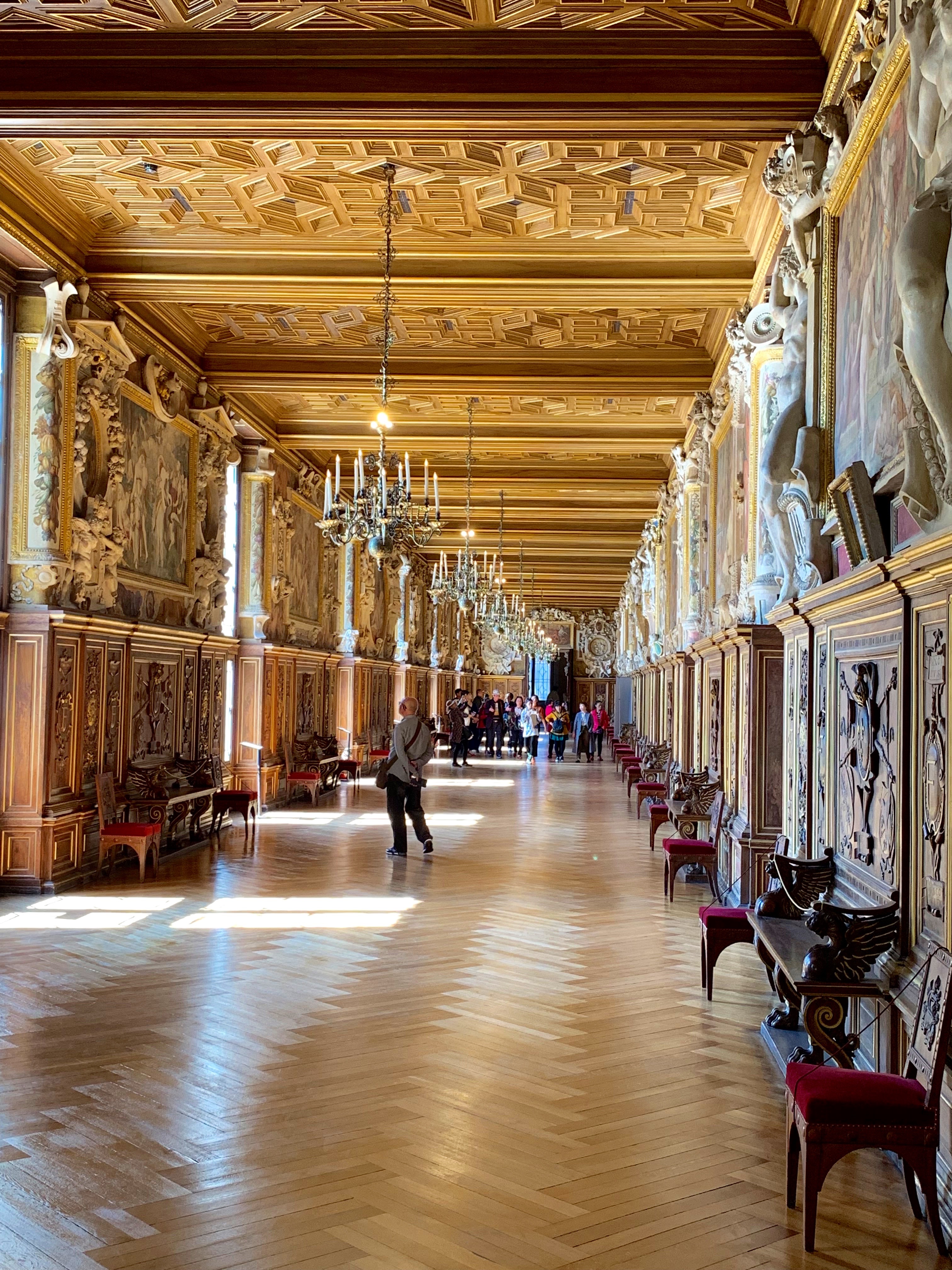
François I Gallery – a Renaissance masterpiece, the Gallery was the original inspiration for the Hall of Mirror at Versailles.

Château de Fontainebleau has the only throne left in France today. Napoleon created the Throne Room in what had once been the bedroom of the French Kings, from Henry IV to Louis XVI.
Henri II, son of François I, built a magnificent ballroom filled with brightly colored frescoes and an intricately patterned oak floor. Look closely at the coats of arms of Henri II and his Medici Queen Catherine — you’ll also see the initials “D” for none other than the lovely Diane de Poitiers. Just imagine the palace intrigue and wagging tongues.
Napoleon added his own initial to the collection, beginning with the golden “N” blazing on the massive entry gate. You’ll also notice prominent use of the “N” in the throne room. Château de Fontainebleau claims the only throne in France — all others were destroyed during the French Revolution. Napoleon also created a formal courtyard and more stately entrance to the palace, although he razed an entire wing to accomplish the renovation.

Gallery of Diana – 80-meter or 242 foot long corridor originally designed by Henry IV and subsequently redecorated by Napoleon and King Louis XVIII who began using the magnificent space as a library.

The bed ordered for Marie Antoinette — notice the “M” initial. Although the Queen was arrested before she ever saw the bed, both Empresses Josephine and Marie-Louise later occupied the room. Photos by Marla Norman
Smaller but still significant contributions included Henry IV’s wing and tennis courts and Napoleon III’s exquisite theater. Outside is Louis XIV’s Grand Parterre — these sublime formal gardens are the largest in Europe.
At the end of your tour, walk along the grounds and be even further amazed at the size and scale of Château de Fontainebleau. Best of all, you can enjoy them in quiet solitude….just like a French monarch.
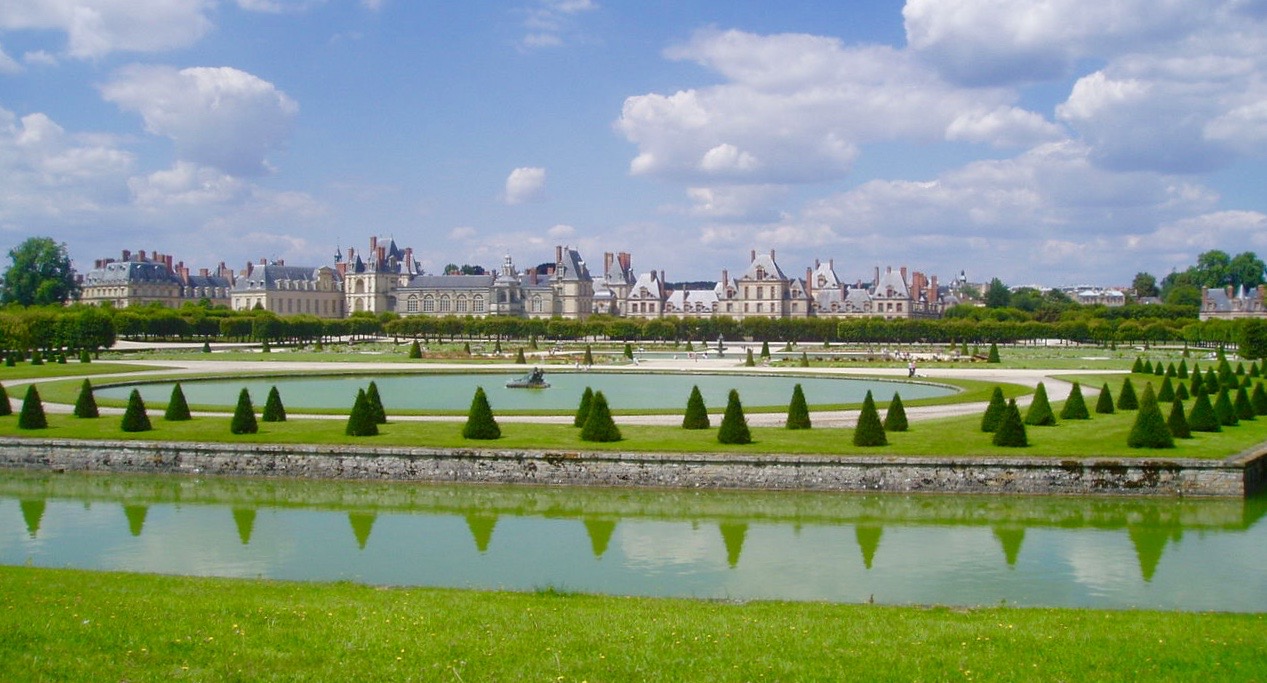
Surrounded by 230 acres of gardens and lakes, Château de Fontainebleau is, as Napoleopn observed, “a true residence of Kings.” Photo courtesy of Château de Fontainebleau.





